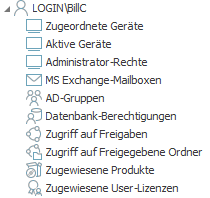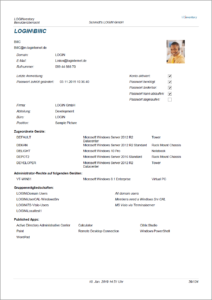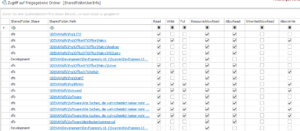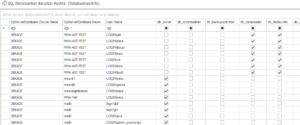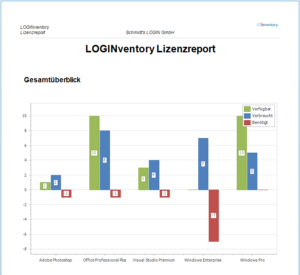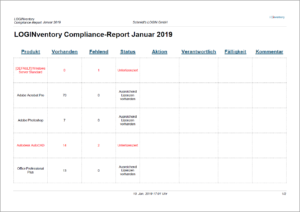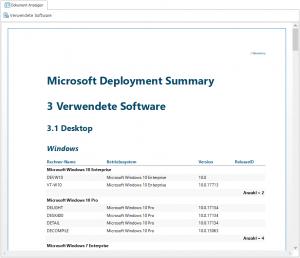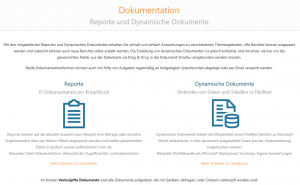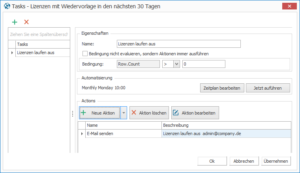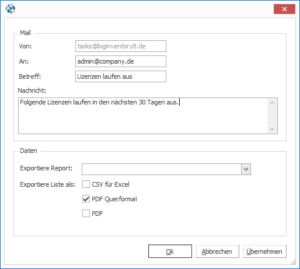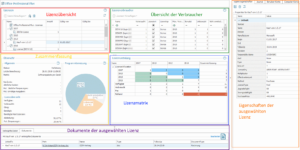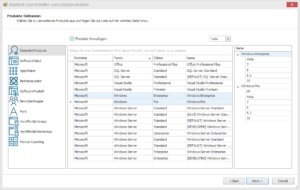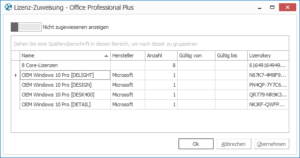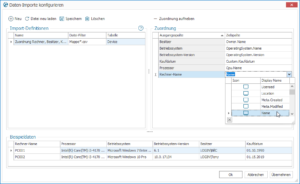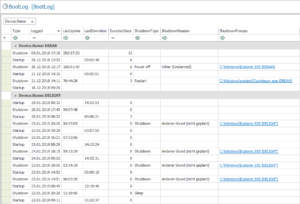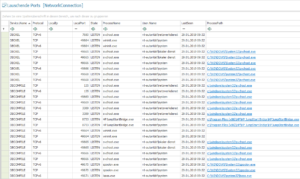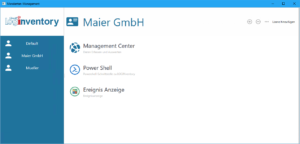Introducing LOGINventory8

The new LOGINventory8 has been significantly improved compared to its predecessor versions with a special focus on increasing user-friendliness. In addition to numerous newly recorded values, additional evaluation options have been created: A large number of prefabricated reports and interesting queries are supplied, which serve, for example, to document the access rights of individual users according to the EU Data Protection Regulation (GDPR) and the configuration of servers, as well as to automatically generate license plausibility reports for Microsoft. In order for you to know about decisive changes in your network without having started LOGINventory, you can now automatically send notifications as soon as self-defined criteria are met, e.g. because new devices are present in the network, critical events have occurred, contracts are about to expire or license violations exist.
Here are the most important changes and innovations.
New User-Related Evaluations
With the new user-related analyses, you can for the first time evaluate the effective permissions for certain shares, folders and databases. A user changes departments and you want to check whether s/he still has access to data from the old department? A shared folder contains sensitive customer data and you have to document who has access to it according to the GDPR? With LOGINventory this and much more is possible with just one click. During the calculation, explicitly set and inherited rights as well as group memberships are recursively evaluated so that you can see at a glance whether the user has access or not.
In addition, you can evaluate on which devices the user has administrator rights, devices can be assigned to users and you can see which licenses are used by the user. Of course, all this information is also processed in a large number of reports, so that you can complete the documentation in no time at all.
Completely New Documentation Options
With the new report tool, documentations are created simply via drag & drop. With the so-called Dynamic Documents, data and tables from the inventory can be integrated into continuous text. Thus you can e.g. create emergency manuals or operating instructions. If something changes in the network, the documents are also updated. Of course, we also supply many dynamic documents, e.g. for the Microsoft Deployment Summary. If there are requests from Microsoft in the context of a license plausibility check, you can create the required forms and reports at the push of a button. Tedious searching for the requested data is a thing of the past!
In addition, all already known reports have been revised and extended. Use them, for example, to regularly document your compliance status, your clients, your servers or your license inventory.
Of course, all documents can be individually adapted and automatically filed using tasks or sent by e-mail.
Tasks and Notifications
Get notified when certain conditions are met. Or have exports or reports automatically sent or saved. With Tasks you can, for example, receive an overview of critical events of the last seven days by e-mail once a week. Be warned which devices will expire under warranty in the next three months. Receive reminders of which contracts will automatically renew next month. You can send the current client documentation monthly via task planning or store an updated emergency manual on a network drive once a week. Thus you always know about all decisive changes, even if you have not opened LOGINventory. Set up individual tasks and let LOGINventory do the work!
Enhancements in License Management
Additional types of licenses can now be stored in license management. It is now possible to distinguish between pool licenses, device licenses, user licenses, subscription licenses and maintenance licenses. In addition, OEM licenses can now be automatically recognized and assigned to devices. For example, it is now possible to evaluate all existing licenses that have not been assigned. Furthermore, when products are added to license management, audit-relevant products are now automatically detected and can be created automatically. In general, it is now also possible to use all values from license management in own queries. In combination with the notifications, e.g. e-mails can be sent if products with sublicensing are detected or expiration dates of licenses are reached shortly. In addition, a number of new reports are offered to document software compliance and license inventory.
Data Import
Data contained in csv files can now be automatically read and imported by LOGINventory by storing them in the data directory. To do this, a mapping must first be defined between the imported data and the columns in LOGINventory so that the values are assigned correctly. If the mapping was created correctly, assets can be created, custom properties (e.g. “Owner”) can be imported or licenses including their properties can be imported.
This means that once the assignment has been created, nothing more needs to be done for the future import than to drop the file in the data directory. Of course, several different mappings can also be defined, e.g. to regularly read in all newly purchased licenses and to update certain features, such as delivery number, end of lease, location, etc. of the devices.
Acquisition of New Values
LOGINventory now records the time when Windows computers were switched on and shut down, when they crashed and what caused the shutdown (table: BootLog). Furthermore, all critical entries, errors and warnings are now recorded from the event log, so that, for example, you can see where critical events occurred last week (table: EventInfo). By logging network connections, it is now possible to evaluate which listening ports existed on which devices, or when which connections existed for the first time (table: NetworkConnection). Routing tables are now also recorded for all device types (table: RoutingTable). With Windows devices it is possible to search for files in self-defined storage locations. Folder structures can also be searched recursively. Also for Windows devices, it is now possible to determine which firewall, antivirus software and antispyware software are available and whether their definitions are up-to-date.
Restructuring of the Program and Tree Structure
With LOGINventory8, the agentless data scanning component has been integrated into the user interface of the Management Center so that data acquisition and evaluation can now be performed within a single window. In addition, the tree structure was redesigned so that the work process is displayed more intuitively and the new functions can be found more prominently.
Multitenancy
New for service providers: Management of different end customers (clients) from one computer. Define individual databases, collection methods and tasks for each client and keep track of all your customer networks. With the Multi Tenancy Manager you can easily manage your different end customers and start LOGINventory simultaneously in the context of different clients.
Further Enhancements
- Search function for queries in the tree: Find the queries you really need quickly and conveniently.
- Newly failed: See which devices could already be scanned in the past, but where the scans failed recently.
- Overview of all linked documents: See in list form which documents were deposited where and filter e.g. on documents, which are due for resubmission soon.
- Usage Metering: Tracking of usage of .bat and .jar files now additionally possible (no longer only .exe)
Download Now and Test LOGINventory8!
For existing customers with active Software Assurance, the new version is of course available free of charge.


